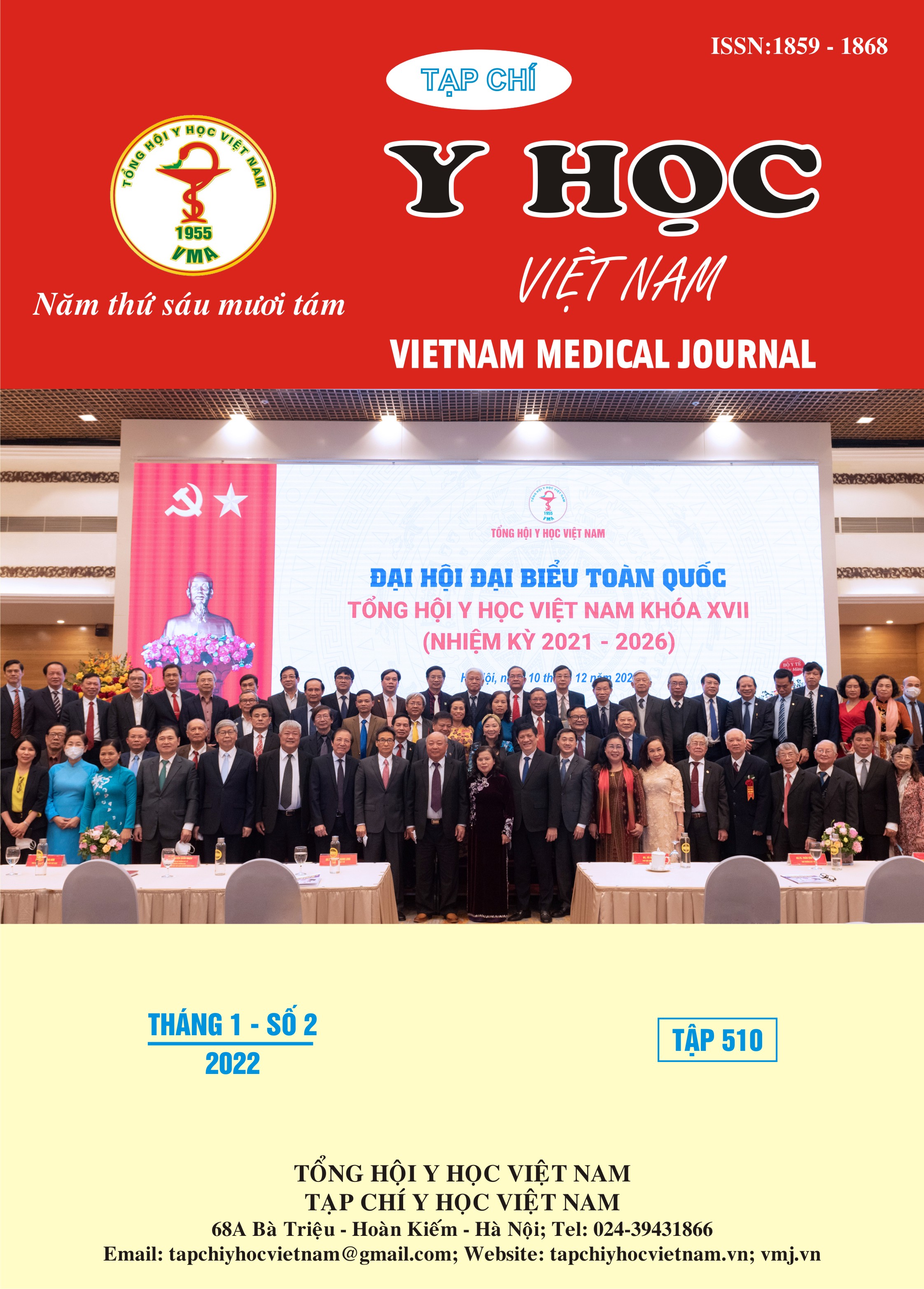ASSOCIATIONS BETWEEN AP AERP ESTIMATED THROUGH EXERCISE STRESS TEST (EST) AND AP AERP SETERMINED VIA ELECTROPHYSIOLOGY STUDY (EPS) IN ASYMPTOMATIC WPW PATIENTS
Main Article Content
Abstract
To examine associations between AP AERP estimated through exercise stress test (EST) and AP AERP determined via electrophysiology study (EPS) in asymptomatic WPW patients. The study includes 35 asymptomatic WPW patients, undergoing both EST and EPS. Subjects were risk stratificated and AP AERP estimated through EST, based on the heart rate that WPW suddenly disappears, or the max heart rate during EST. AP AERP was also determined via EPS for all patients. AP AERP measurements by 2 tests were compared.6 patients were stratificated as low risk through EST, their AP AERP estimated was 469 ± 84 ms, which is not statistically significantly different from the index determined via EPS: 451 ± 128 ms. In 29 subjects classified as high risk through EST, AP AERP estimated is 379 ± 31 ms, while the index determined via EPS was 298 ± 77 ms; the difference is statistically significant. The asymptomatic WPW patients stratificated as high risk through EST, are strongly recommended to undergo EPS and consider ablation.
Article Details
Keywords
AP AERP, exercise stress test (EST), electrophysiology study (EPS), asymptomatic WPW patients
References
2. Obeyesekere M.N., Leong-Sit P., Massel D. và cộng sự. (2012). Risk of Arrhythmia and Sudden Death in Patients With Asymptomatic Preexcitation: A Meta-Analysis. Circulation, 125(19), 2308–2315.
3. Gibbons Raymond J., Balady Gary J. và cộng sự. (2002). ACC/AHA 2002 Guideline Update for Exercise Testing: Summary Article. Circulation, 106 (14), 1883–1892.
4. Brugada J., Katritsis D.G., Arbelo E. và cộng sự. (2020). 2019 ESC Guidelines for the management of patients with supraventricular tachycardiaThe Task Force for the management of patients with supraventricular tachycardia of the European Society of Cardiology (ESC)Developed in collaboration with the Association for European Paediatric and Congenital Cardiology (AEPC). Eur Heart J, 41(5), 655–720.
5. Munger T.M., Packer D.L., Hammill S.C. và cộng sự. (1993). A population study of the natural history of Wolff-Parkinson-White syndrome in Olmsted County, Minnesota, 1953-1989. Circulation, 87(3), 866–873.
6. Pappone C., Santinelli V., Rosanio S. và cộng sự. (2003). Usefulness of invasive electrophysiologic testing to stratify the risk of arrhythmic events in asymptomatic patients with Wolff-Parkinson-White pattern: Results from a large prospective long-term follow-up study. J Am Coll Cardiol, 41(2), 239–244.
7. Carlo P., Vincenzo S., Francesco M. và cộng sự. (2003). A Randomized Study of Prophylactic Catheter Ablation in Asymptomatic Patients with the Wolff–Parkinson–White Syndrome. N Engl J Med, 9.
8. Trần Văn Đồng và cộng sự. (2004). Nghiên cứu điện sinh lý và điều trị hội chứng Wolff-Parkinson-White bằng năng lượng sóng có tần số radio qua catheter. Tạp chí Tim mạch học Việt Nam số 38. 20-26.


